D&D Character Art: Best Styles & Tips
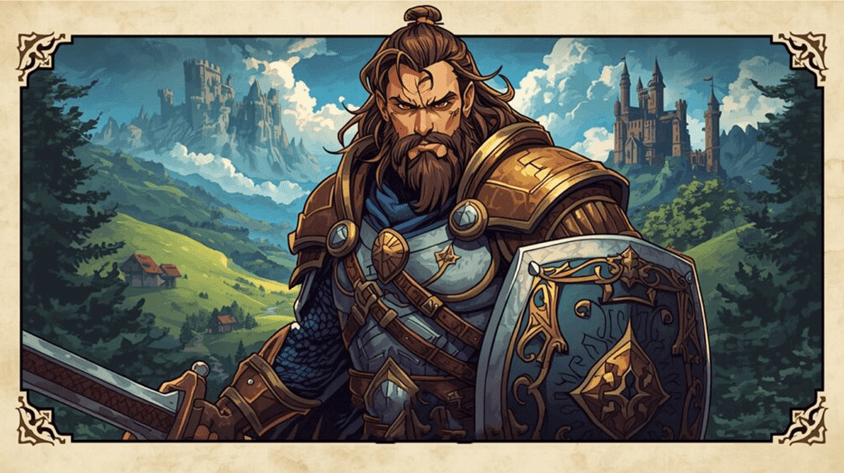
Struggling with D&D Character Art that feels flat? Your D&D character is rich on the character sheet, but the character portrait misses the spark.
Here’s the change: pick clear art styles, add story cues, and use Summon Worlds to bring your character to life fast.
👉🏻What you’ll get: a simple plan, quick fixes, style picks, and in-app steps that work.
Strong art sets the mood, boosts buy-in, and helps your table play better. Ready? Let’s build the art your hero deserves.
What Is D&D Character Art and Why It Matters
Character art is more than a pretty face. It sets the tone. It tells your table who this hero is at a glance. It helps your DM pitch scenes that fit. It helps other players read your intent.
⏳Old way: hunt for random Pinterest refs, then wait weeks for a sketch.
⏰New way: decide the shot (bust, half, or full body). Pick a style. Lock a few story cues. Generate fast tests, then refine.
Tie it to your rules, too. Your character sheet lists gear, class, features, and looks. These notes guide pose, props, and costume. They also guide small details like scars, tattoos, hair, and eyes.
💡The official 5e sheet even includes “Eyes,” “Hair,” “Skin,” “Character Appearance,” and “Backstory.” Use them.
Top D&D Character Art Styles and When to Use Each One
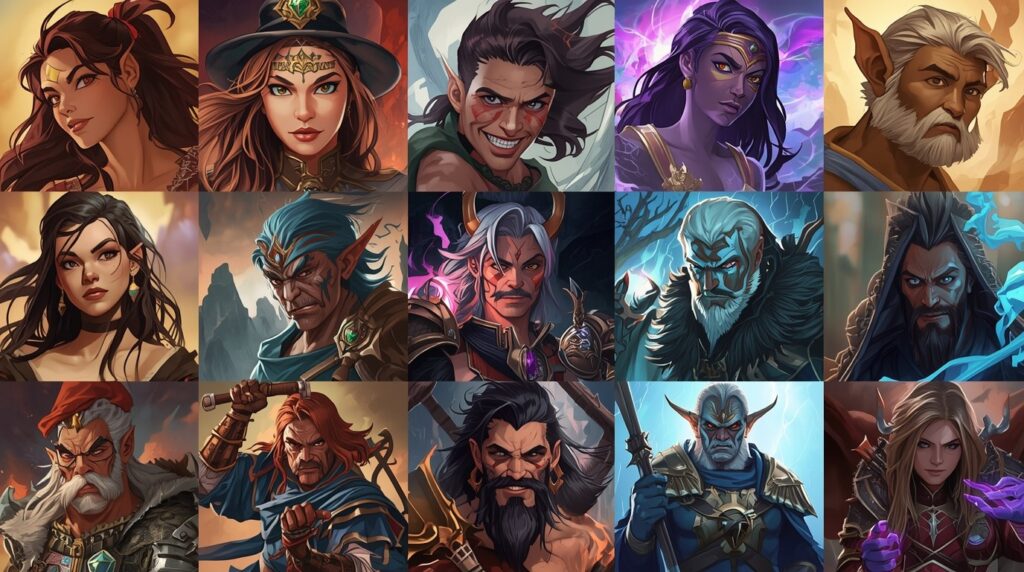
1) Realistic
Clean forms. True-to-life lighting. Great for gritty campaigns.
- Tip: keep props practical. Dents, dirt, and wear signal history.
- Use when: you want a grounded look for low-magic or grim stories.
2) Semi-realistic / Painterly
Soft edges. Visible brushwork. Nice balance of mood and detail.
- Use when: you want emotion first, with enough accuracy for armor and gear.
3) Anime / Cel-shaded
Flat shadows. Bold shapes. Fast read at small sizes.
Works great for avatars, VTT tokens, and mobile screens.
- Technique note: cel shading uses hard edges between light and shadow. No blending.
4) Comic / Ink
Strong line art. High contrast. Easy to read action poses. Perfect when you like clear silhouettes and punchy panels.
5) Watercolor / Wash
Soft gradients. Dreamy vibe. Great for fey, spirits, and druids. Keep the palette tight. Let texture set the mood.
6) Pixel / Low-poly (retro or stylized)
Chunky shapes. Big personality with few details. Good for maps, tokens, and “gamey” vibes. Many teams use cel-style or low-poly to keep forms clear and fast to read.
- Quick pick rule: Match style to story. Bright pulp? Try a comic or an anime. Grim war? Go realistic or painterly. Arcade tone? Pixel or cel.
Choosing the Right Character Portrait Size: Bust, Half-Body, or Full-Body
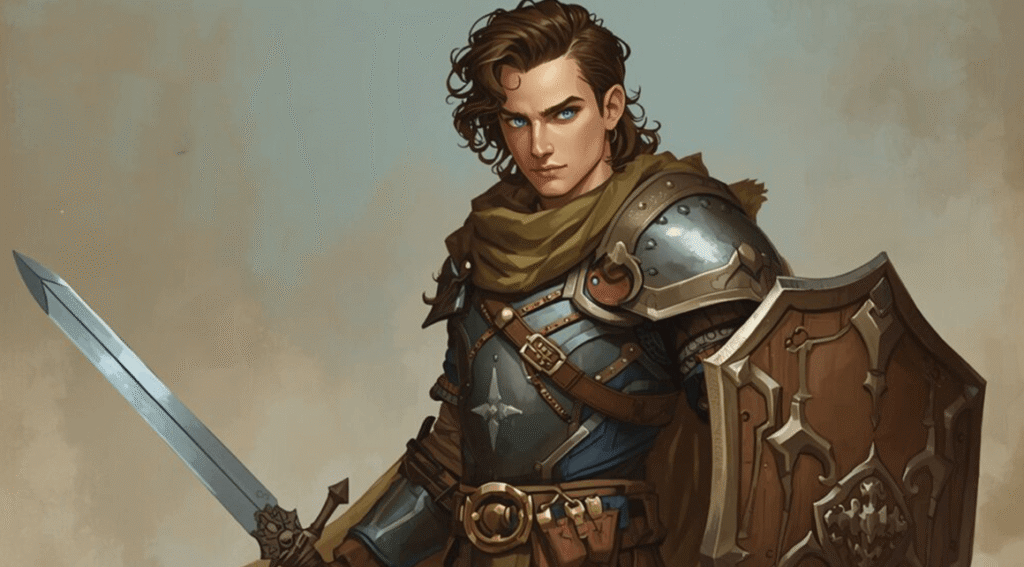
Character portrait choices matter. Each shot tells a different story.
- Bust / Portrait: Head and shoulders. Face and emotion lead. Budget-friendly. Great for socials, sheets, and profile cards.
- Half-body: Waist-up. Adds pose, armor plates, and key gear.
- Full-body: Head-to-toe. Shows stance, boots, cape flow, and weapons. Good when gear and silhouette matter most.
If you are on a budget, start with a bust. If your build shines through gear and pose, go full-body.
How to Design D&D Character Art That Stands Out at the Table
👤Start with a silhouette
If the outline reads, the character reads. Horns, cloak shape, blade length, and hair mass should be clear in pure black. Shape language helps. Soft, round shapes feel friendly. Triangles feel sharp or dangerous. Squares feel steady and solid.
📸Use a focal point
Pick one thing to pop first: eyes, holy symbol, or a cursed blade. Guide the eye with contrast and placement. Portrait teachers stress clear composition and value control for stronger reads.
⚡️Tell a story with small cues
Use scars or tattoos to hint at past fights, vows, or culture. This is common in game art, but it works best when the marks serve character and world, not just “edge.”
👍Keep props honest
If your D&D character carries a longbow, show the bowstring wear. If they wear a plate, show straps and buckles. Believability sells fantasy.
Common D&D Character Art Mistakes and How to Fix Them
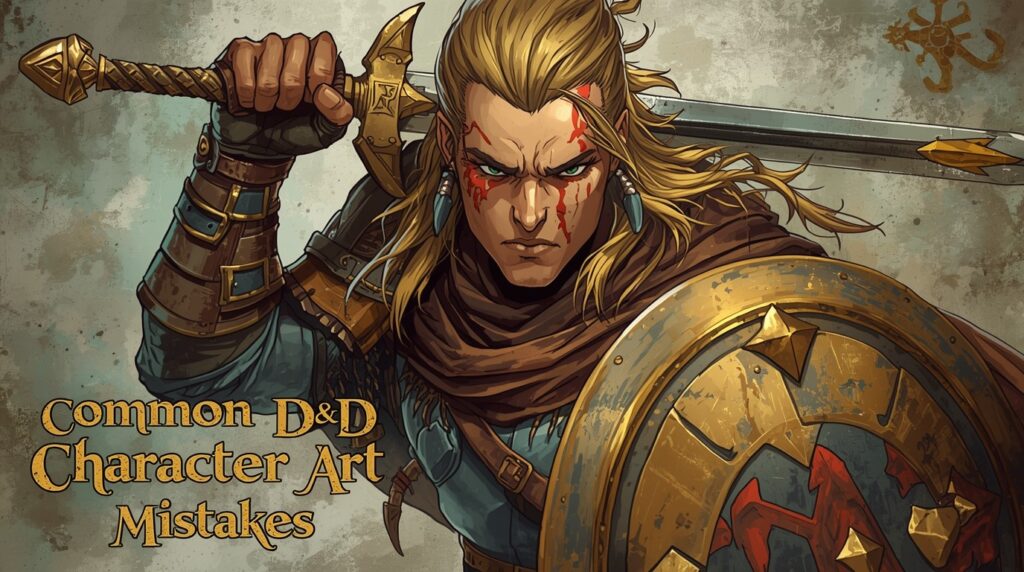
Too many ideas in one design
If you add every trinket, nothing stands out.
✅Fix: cut to three visual themes. Example: “storm, oak, sapphire.”
No clear shape plan
Mixed shapes muddy the read.
✅Fix: choose one main shape family for armor and silhouette. Support with a secondary shape for details.
Flat pose
Arms down. Feet flat. No story.
✅Fix: add a purpose. “Shield meets blow.” “Hand lifts holy focus.” Pose should match class feature or spell.
Colors without a reason
Rainbow gear kills mood.
✅Fix: build a 3-color palette. One neutral, one material color (leather/steel), one accent.
No tie to the sheet
Art ignores stats and features.
✅Fix: pull 3 items from your character sheet (signature weapon, background trinket, class icon). D&D Beyond and official sheets stress that the sheet carries the info you need. Let it drive your choices.
Best Poses and Props for Every D&D Class
- Barbarian: open chest, big triangle shapes, chipped axe.
- Paladin: square stance, shield forward, holy mark bright.
- Rogue: offset hips, cloak curve, small blades and pouches.
- Wizard: hands lead, book or focus raised, cloth motion.
- Ranger: bow limb curve, quiver angle, track dust on boots.
Keep gear readable. One hero prop beats five small ones. And ensure the prop matches the sheet entry you actually use.
Simple Tips for Color, Lighting, and Texture in Character Art
- One light rule: one main light, one soft fill at most.
- Material hints: leather = soft specular; steel = sharp highlights.
- Accent color: pick one pop that ties to oath, circle, or domain.
- Texture balance: face smooth; cloak textured. Let the face win.
Cel-shade tokens: hard edges help tiny tokens read on VTT and phones.
How to Create D&D Character Art in Summon Worlds Step-by-Step
1️⃣Workflow A: Fast portrait for a new one-shot
- Open Summon Worlds → Character Creation.
- Paste your class, background, and one-line goal.
- Pick the Anime or Comic preset for fast reading.
- Generate a character portrait bust.
- Use Enhance Chips to sharpen eyes.
- Save to a Collection named “One-Shot Party.”
- Share the link with your GM.
2️⃣Workflow B: Full gear showcase for a campaign
- Open your character. Add gear from the character sheet as tags.
- Choose Full-body and Painterly style.
- Generate three angles with Extra Images.
- Use Legendary for a final pass before you post.
- Publish to your profile.
- Use Character Chat to preview voice lines that match the pose.
3️⃣Workflow C: Iterating on story cues
Ready to Bring D&D Character Art to Life?
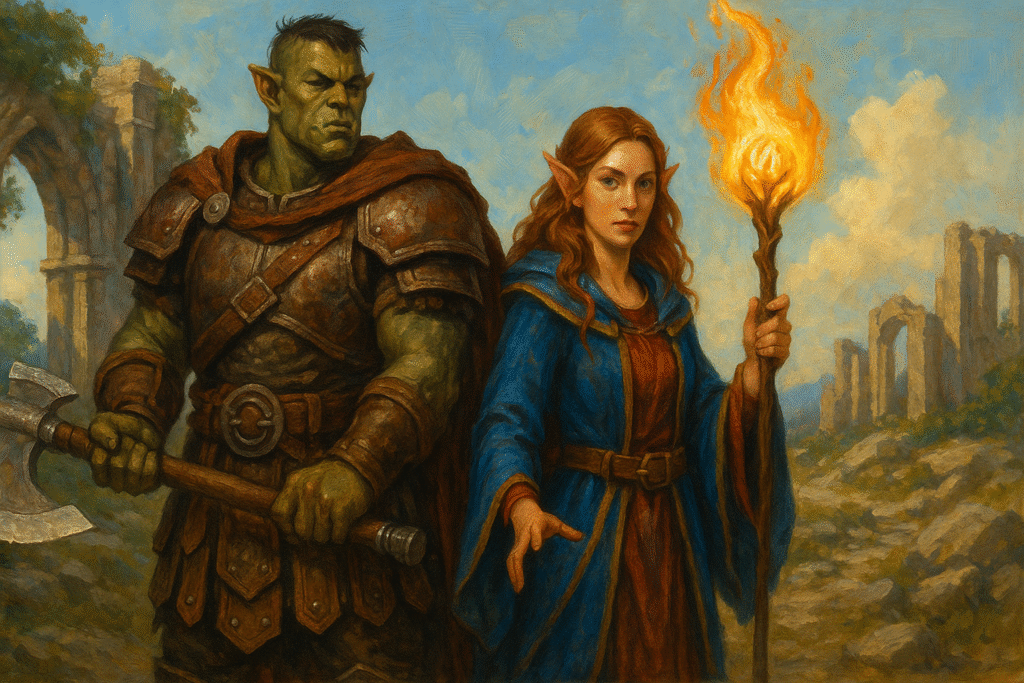
D&D Character Art works when it tells a clear story fast. Pick art styles that match your table. Choose the right shot for the job. Keep a strong silhouette and one focal point. Use details from your character sheet so the character portrait fits the hero you play in Dungeons Dragons. Add scars tattoos only when they mean something. Keep the loop simple: make, test, refine.
Summon Worlds helps you move from idea to image in minutes on mobile, so your character art actually brings your D&D character to life.
🌟Ready to turn notes into a portrait you love?
Download Summon Worlds for free on Google Play (Android) or the App Store (Apple).
What is D&D character art?
How to choose the right art styles for my D&D character?
Why do silhouette and shape language matter?
What is the best way to turn my character sheet into a character portrait?
How to use scar tattoos without clichés?
Disclaimer: Summon Worlds and the content on summonworlds.com are not affiliated with, endorsed by, or sponsored by Wizards of the Coast LLC. Dungeons & Dragons, D&D, and related terms are registered trademarks of Wizards of the Coast. Any references to D&D game mechanics, settings, or terminology are made for educational, commentary, and fan content purposes only. This blog does not reproduce or distribute official D&D content. All original ideas, characters, and creative content in this post are the intellectual property of OpenForge LLC, the parent company of Summon Worlds.

